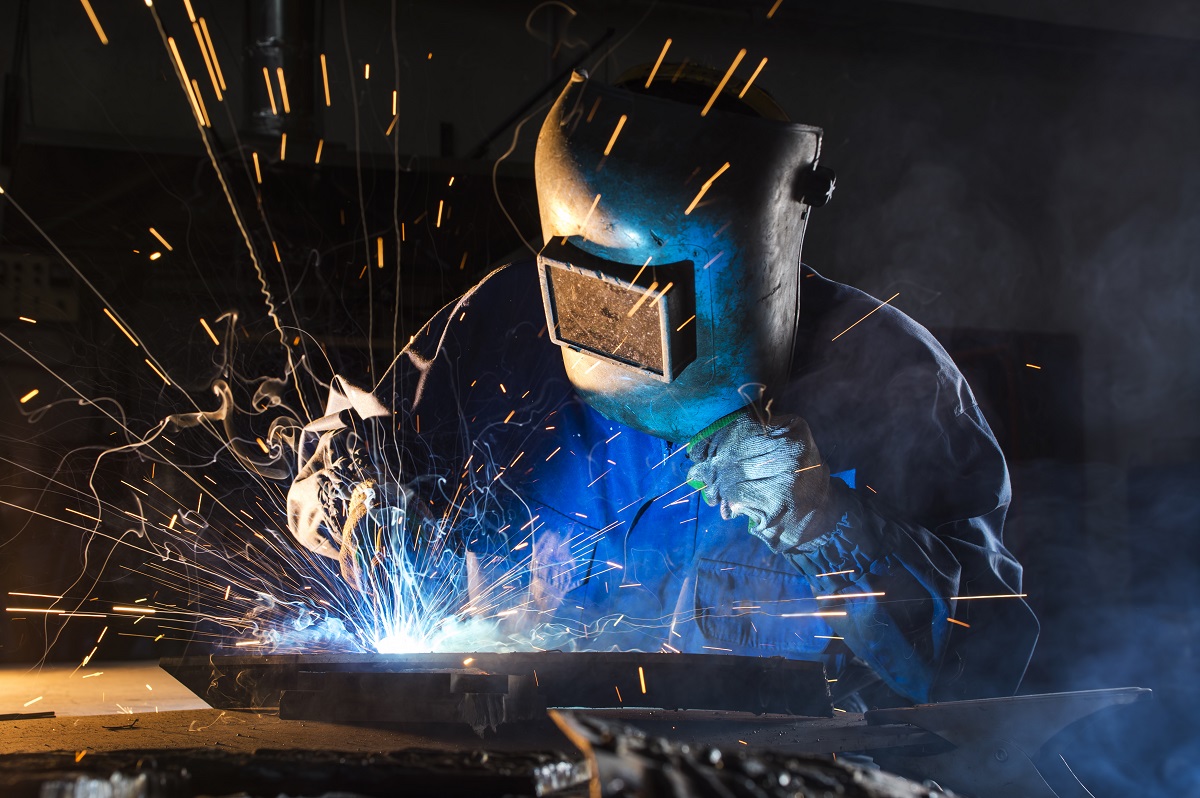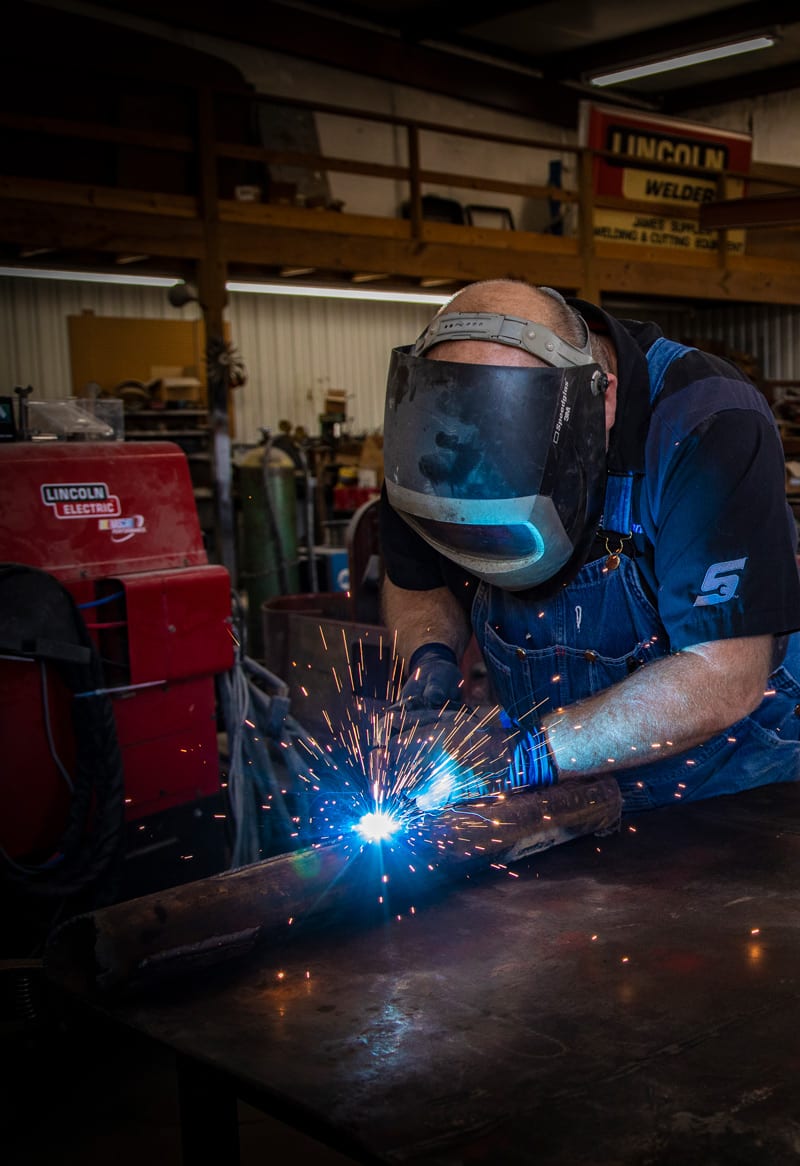Common Welding Fixing Issues and Just How to Address Them Efficiently
Welding repair services usually run into a series of concerns that can jeopardize the honesty of the end product. Usual troubles consist of insufficient penetration, porosity, and imbalance, among others. Each problem offers special obstacles that call for certain techniques for resolution. Recognizing these issues is vital for welders aiming to improve their results and abilities. This discussion will certainly explore these usual welding fixing issues and effective methods to address them.
Poor Penetration
Poor infiltration takes place when the weld steel stops working to completely fuse with the base material, resulting in weak joints and prospective structural failings. This problem usually stems from insufficient heat input, inaccurate electrode angle, or improper welding speed. Welders may experience inadequate infiltration due to a mistake of the required criteria for a certain product thickness or kind. Additionally, contamination on the base material's surface area can prevent efficient bonding, intensifying the problem. To resolve insufficient penetration, welders need to ensure proper setups on their devices and preserve a tidy job surface. Regular examination of welds is recommended to determine any shortages early, allowing for timely corrections and the prevention of compromised structural integrity in bonded settings up.
Porosity
Porosity is a typical issue in bonded joints that manifests as tiny gas bubbles trapped within the weld steel. This issue can compromise the stability of the weld, resulting in decreased stamina and prospective failure under stress and anxiety. Fabrication. Porosity commonly arises from contamination, dampness, or inappropriate welding techniques, which allow gases to run away right into the molten weld swimming pool. To deal with porosity, welders must assure proper surface area preparation, maintain a clean workplace, and use ideal welding specifications. Furthermore, choosing the ideal filler product and securing gas can mitigate gas entrapment. Regular inspection and testing of welds can help recognize porosity early, assuring prompt rehabilitative activities are taken, thus maintaining the high quality and integrity of the welded structure
Misalignment
Misalignment in welding can emerge from different elements, including inappropriate setup and thermal expansion. Understanding the origin is important for effective resolution. Numerous adjustment methods are readily available to straighten components and ensure architectural integrity.
Causes of Misalignment
Welding misalignment often originates from a variety of underlying concerns that can compromise architectural integrity. One main cause is improper fit-up of parts before welding, which can bring about gaps and unequal surfaces. Variations in thermal expansion throughout the welding procedure can likewise lead to distortion, specifically if the materials being signed up with have various coefficients of expansion. Additionally, insufficient securing and fixturing might fall short to hold parts safely in position, resulting in motion throughout welding. Inadequately maintained tools, including welding devices and devices, might introduce inconsistencies in the weld grain, additional adding to misalignment. Operator mistake, stemming from inadequate training or experience, can also play a significant role in creating misaligned welds.

Modification Techniques Available
Attending to imbalance properly needs a combination of corrective methods customized to the certain problems handy. One typical technique is the usage of components or jigs to hold elements in the appropriate placement during welding, making certain consistent alignment. In addition, pre-heating the materials can help in reducing distortion and improve fit-up. For significant imbalance, mechanical adjustment strategies, such as utilizing hydraulic jacks or clamps, can be employed to correct the placement prior to welding. Post-weld warmth treatment may additionally be needed to alleviate tensions triggered by misalignment. Cautious assessment and modification during the setup phase can avoid imbalance issues from ending up being considerable troubles, promoting a smoother welding process and enhancing total structural integrity.
Distortion
Distortion is a typical difficulty in welding that can develop from numerous variables, consisting of unequal cooling and heating. Understanding the reasons for distortion is vital for implementing effective avoidance strategies. Resolving this issue not just improves architectural integrity yet likewise boosts the general high quality of the weld.
Reasons for Distortion
When based on the extreme warmth of welding, materials frequently undergo modifications that can lead to distortion. This sensation largely emerges from thermal development and tightening throughout the welding procedure. As the weld area warms up, the material broadens; upon air conditioning, it acquires, which can create inner tensions. Additionally, unequal home heating throughout a workpiece can exacerbate these tensions, resulting in warping or bending. The type of product additionally plays a considerable function; steels with differing thermal conductivity and coefficients of growth might react in a different way, causing unforeseeable distortions. Bad joint layout and inadequate fixturing can contribute to misalignment during welding, raising the likelihood of distortion. Recognizing these causes is essential for effective welding repair service and prevention approaches.
Prevention Techniques
Reliable avoidance strategies for distortion during welding focus on regulating warm input and making certain appropriate joint layout. Keeping a constant warmth input helps to reduce thermal development and tightening, which can bring about distortion. Making use of methods such as pre-heating the work surface can additionally reduce the temperature gradient, advertising uniform heating. Additionally, picking suitable joint designs, such as T-joints or lap joints, can improve security and decrease stress concentrations. Applying correct fixturing to secure the work surfaces in position additionally aids in preserving alignment during the welding procedure. Staggered welding sequences can distribute warm more uniformly, protecting against localized distortion. By applying these methods, welders can substantially decrease the probability of distortion and enhance the total top quality of their welds.
Splitting
Splitting is an usual problem encountered in welding fixings, frequently resulting from various factors such as improper cooling prices, material option, or poor joint preparation. The incident of fractures can substantially endanger the honesty of the weld, leading to potential failures during operation. To resolve this concern, welders must initially examine the origin, making sure that products are suitable and appropriately selected for the specific application. In addition, controlling the air conditioning price during the welding procedure is important; rapid cooling can generate anxiety and bring about breaking. Appropriate joint design and prep work likewise add to decreasing the risk. Applying these approaches can improve weld high quality and durability, eventually lowering the likelihood of cracking in finished weldments.

Insufficient Fusion
A significant problem in welding repair work is insufficient combination, which takes place when the weld metal does not appropriately bond with the base product or previous weld passes - Montana Mobile Welding and Repair Fabrication. This flaw can bring about weak points in the joint, possibly jeopardizing the integrity of the bonded framework. Aspects adding to insufficient blend consist of insufficient warm input, inappropriate welding method, and contamination of the surface areas being joined. To resolve this problem effectively, welders need to guarantee proper pre-weld cleaning and surface prep work, as well as change their welding criteria to accomplish appropriate infiltration and combination. Routine inspection throughout the welding procedure can likewise assist recognize incomplete fusion early, permitting for timely restorative procedures to enhance the general quality of the weld
Overheating
While welding fixings can boost structural stability, overheating provides a significant challenge that can result in product degradation. Excessive warm during welding can alter the mechanical homes of steels, causing lowered strength, enhanced brittleness, and bending. This phenomenon is particularly vital in high-stress applications where architectural reliability is vital. Identifying overheating can involve visual assessments for discoloration or distortion, along with keeping track of temperature level during the welding procedure. To reduce the threats related to getting too hot, welders need to use suitable methods, such as managing warm input, changing traveling rate, and making use of suitable filler materials. Additionally, applying pre- and post-weld heat treatments can assist recover material properties and improve the overall high quality of the repair service, ensuring long-term performance and security.
Regularly Asked Concerns
What Are the Usual Indications of a Welding Issue?

Exactly How Can I Evaluate My Welds for Top quality?
To test welds for high quality, one can use aesthetic inspections, ultrasonic screening, and radiographic methods. Each technique ensures architectural integrity, recognizes defects, and verifies adherence to defined standards, ultimately enhancing the reliability of the welded joints.
What Security Safety Measures Should I Take While Welding?
When welding, one need to focus on safety and security by using proper personal safety tools, ensuring correct ventilation, protecting combustible materials away, maintaining a tidy work area, and recognizing surroundings to avoid injuries and mishaps.
Can I Repair a Weld Without Redoing the Entire Joint?
Repairing a weld without renovating the whole joint is possible, relying on the damage (Belgrade Welding). Techniques such as grinding, adding filler material, or making use of a welding process can successfully deal with certain flaws while preserving the bordering framework
What Devices Are Crucial for Efficient Welding Services?
Vital devices for reliable welding repair work include a welding device, cable brush, grinder, safety gear, clamps, and filler products. Each tool plays a vital function in making certain quality and security throughout more info the repair work procedure. Porosity normally develops from contamination, moisture, or incorrect welding techniques, which permit gases to run away right into the liquified weld swimming pool. Improperly conserved equipment, consisting of welding machines and tools, might introduce variances in the weld grain, further contributing to misalignment. When subjected to the extreme warmth of welding, materials frequently go through changes that can lead to distortion. Splitting is a common issue encountered in welding repair work, commonly resulting from different aspects such as improper air conditioning rates, product choice, or insufficient joint prep work. A considerable problem in welding repairs is insufficient combination, which happens when the weld steel does not appropriately bond with the base product or previous weld passes.